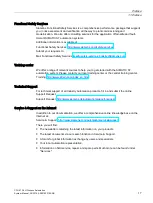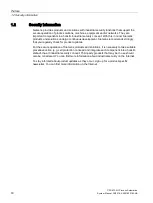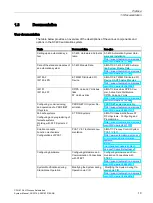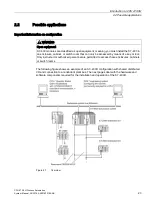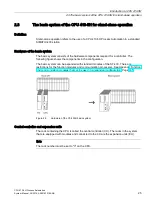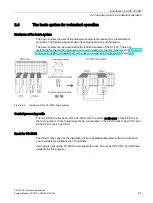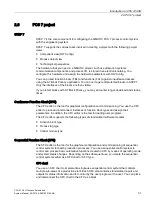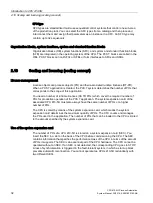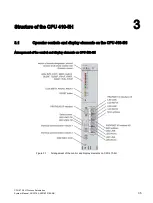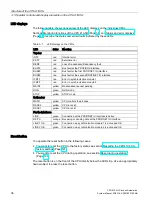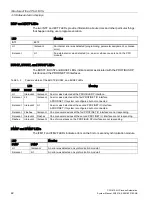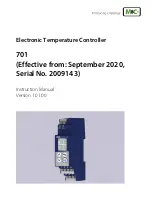
Introduction to CPU 410-5H
2.4 The basic system for redundant operation
CPU 410-5H Process Automation
28
System Manual, 09/2014, A5E31622160-AB
Power supply
You require a power supply module from the standard system range of the S7-400 for each
of the two subsystems of the S7-400H.
To increase availability of the power supply, you can also use two redundant power supplies
in each subsystem. In this case, you use the power supply modules PS 405 R / PS 407 R.
A combination of these can also be used in redundant configurations (PS 405 R with
PS 407 R).
Synchronization modules
The synchronization modules are used to link the two CPUs. They are installed in the CPUs
and interconnected by means of fiber-optic cables.
Two types of synchronization modules are available:
●
Synchronization modules for synchronization cables up to 10 meters long
●
Synchronization modules for synchronization cables up to 10 kilometers long
You must use 4 synchronization modules of the same type in a fault-tolerant system. For a
description of the synchronization modules, refer to the section Synchronization modules for
the CPU 410-5H (Page 201).
Fiber-optic cable
The fiber-optic cables are used to interconnect the synchronization modules for the
redundant link between the two CPUs. They interconnect the upper and lower
synchronization modules in pairs.
You will find the specification of the fiber-optic cables you can use in an S7-400H in the
section Selecting fiber-optic cables (Page 209).
Operation
The operation of a CPU 410-5H requires a system expansion card. The system expansion
card specifies the maximum number of process objects that can be loaded to the CPU and
saves the license information in case of a system expansion. The system expansion card
forms a hardware unit with the CPU 410-5H. In redundant operation, two CPUs 410-5H must
have system expansion cards with the same number of POs.




